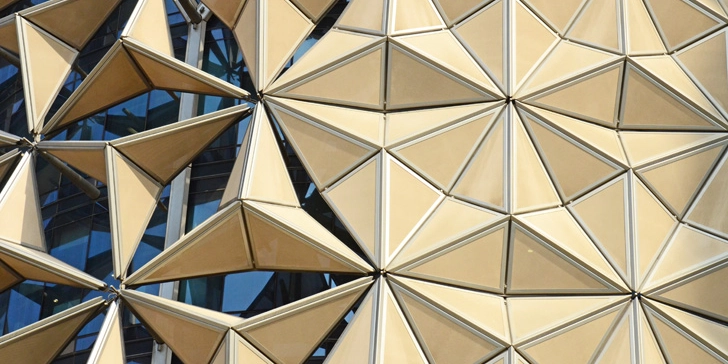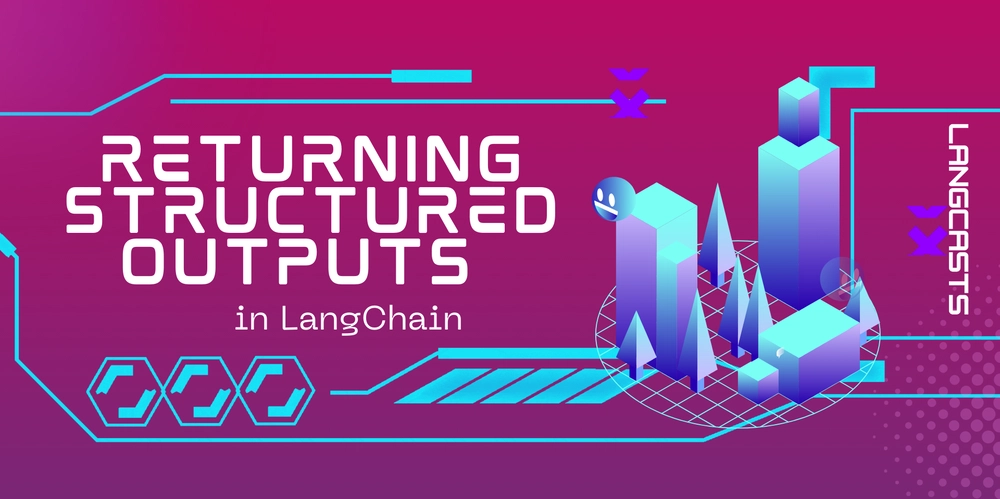Power of Parametric Design: Trends and Best Practices
Design is evolving. Fast. What used to take days or weeks of hand modeling can now happen in minutes with parametric design. It's not just a buzzword. It's a transformative approach that's changing everything from architecture and product development to software and industrial design. But what exactly is parametric design? Why is it gaining so much popularity? And how can companies and designers use it to their advantage? Let's take a look. What Is Parametric Design? Simply put, parametric design is a method of designing objects or systems based on a set of parameters or rules. These parameters can be anything from dimensions, angles, materials, or relationships between components. Instead of drawing something by hand, designers create a set of rules. Then software generates a shape or structure based on those rules. Change a variable, and the entire design instantly adapts. Think of it this way: instead of drawing one chair, you create a system that can generate thousands of different chairs - each with slight variations - just by changing a few numbers. Why Parametric Design Matters Today The world demands flexibility and speed. Parametric design is the answer to this challenge. Here's why it's making waves: Customization at scale Customers expect products that fit their needs. Parametric design allows for customization without having to start from scratch every time. Whether it's a unique building facade or a unique piece of furniture, designers can quickly adjust features while maintaining structure and integrity. Design efficiency No more redrawing or reworking entire projects for small changes. With parametric tools, updates cascade throughout the design. This saves countless hours - and headaches. Data-driven creativity Yes, data and creativity can work together. Parametric design encourages experimentation based on real-time feedback. Designers can test dozens of versions to find the most elegant or efficient result. Real-World Applications of Parametric Design Parametric design isn't just for architects or engineers. It's everywhere. Architecture: Think of the flowing shapes of buildings like Zaha Hadid's. These structures wouldn't be possible without parametric tools like Grasshopper or Rhino. Product design: Companies now use parameters to mass-produce customized eyeglasses, shoes, or even bike frames. Urban planning: City models can adapt to zoning regulations, climate data, or real-time population forecasts. Software development: UI components and layouts dynamically adapt to different devices, screen sizes, and user behavior. It's not just about making things look cool. It's about solving complex problems more effectively. Key Trends in Parametric Design Staying on top of trends can help you stay ahead. Here's what's shaping the parametric design world today: AI meets parametric Artificial intelligence is taking parametric design to the next level. Generative design, where AI suggests design options based on goals and constraints, is now part of many workflows. The computer becomes a design partner, not just a tool. Cloud collaboration Designers and engineers no longer work in isolation. Platforms like Autodesk Fusion 360 allow teams to collaborate on parametric models in the cloud. This means faster collaboration, version control, and seamless integration. Sustainability as a priority Parametric models can optimize materials, energy consumption, and environmental impact. For example, architects use them to simulate sunlight, airflow, and heat distribution to create energy-efficient buildings from the ground up. Interdisciplinary Integration Parametric design is not limited to just one industry. Today, it is a common language in architecture, engineering, manufacturing, fashion, and even gaming. More in our article: https://instandart.com/blog/computer-aided-design/power-of-parametric-design-trends-and-best-practices/

Design is evolving. Fast. What used to take days or weeks of hand modeling can now happen in minutes with parametric design. It's not just a buzzword. It's a transformative approach that's changing everything from architecture and product development to software and industrial design. But what exactly is parametric design? Why is it gaining so much popularity? And how can companies and designers use it to their advantage? Let's take a look.
What Is Parametric Design?
Simply put, parametric design is a method of designing objects or systems based on a set of parameters or rules. These parameters can be anything from dimensions, angles, materials, or relationships between components.
Instead of drawing something by hand, designers create a set of rules. Then software generates a shape or structure based on those rules. Change a variable, and the entire design instantly adapts.
Think of it this way: instead of drawing one chair, you create a system that can generate thousands of different chairs - each with slight variations - just by changing a few numbers.
Why Parametric Design Matters Today
The world demands flexibility and speed. Parametric design is the answer to this challenge.
Here's why it's making waves:
Customization at scale
Customers expect products that fit their needs. Parametric design allows for customization without having to start from scratch every time. Whether it's a unique building facade or a unique piece of furniture, designers can quickly adjust features while maintaining structure and integrity.Design efficiency
No more redrawing or reworking entire projects for small changes. With parametric tools, updates cascade throughout the design. This saves countless hours - and headaches.Data-driven creativity
Yes, data and creativity can work together. Parametric design encourages experimentation based on real-time feedback. Designers can test dozens of versions to find the most elegant or efficient result.
Real-World Applications of Parametric Design
Parametric design isn't just for architects or engineers. It's everywhere.
Architecture: Think of the flowing shapes of buildings like Zaha Hadid's. These structures wouldn't be possible without parametric tools like Grasshopper or Rhino.
Product design: Companies now use parameters to mass-produce customized eyeglasses, shoes, or even bike frames.
Urban planning: City models can adapt to zoning regulations, climate data, or real-time population forecasts.
Software development: UI components and layouts dynamically adapt to different devices, screen sizes, and user behavior.
It's not just about making things look cool. It's about solving complex problems more effectively.
Key Trends in Parametric Design
Staying on top of trends can help you stay ahead. Here's what's shaping the parametric design world today:
- AI meets parametric Artificial intelligence is taking parametric design to the next level. Generative design, where AI suggests design options based on goals and constraints, is now part of many workflows. The computer becomes a design partner, not just a tool.
- Cloud collaboration Designers and engineers no longer work in isolation. Platforms like Autodesk Fusion 360 allow teams to collaborate on parametric models in the cloud. This means faster collaboration, version control, and seamless integration.
- Sustainability as a priority Parametric models can optimize materials, energy consumption, and environmental impact. For example, architects use them to simulate sunlight, airflow, and heat distribution to create energy-efficient buildings from the ground up.
- Interdisciplinary Integration Parametric design is not limited to just one industry. Today, it is a common language in architecture, engineering, manufacturing, fashion, and even gaming.
More in our article: https://instandart.com/blog/computer-aided-design/power-of-parametric-design-trends-and-best-practices/




























![[Webinar] AI Is Already Inside Your SaaS Stack — Learn How to Prevent the Next Silent Breach](https://blogger.googleusercontent.com/img/b/R29vZ2xl/AVvXsEiOWn65wd33dg2uO99NrtKbpYLfcepwOLidQDMls0HXKlA91k6HURluRA4WXgJRAZldEe1VReMQZyyYt1PgnoAn5JPpILsWlXIzmrBSs_TBoyPwO7hZrWouBg2-O3mdeoeSGY-l9_bsZB7vbpKjTSvG93zNytjxgTaMPqo9iq9Z5pGa05CJOs9uXpwHFT4/s1600/ai-cyber.jpg?#)














































































































































![[The AI Show Episode 144]: ChatGPT’s New Memory, Shopify CEO’s Leaked “AI First” Memo, Google Cloud Next Releases, o3 and o4-mini Coming Soon & Llama 4’s Rocky Launch](https://www.marketingaiinstitute.com/hubfs/ep%20144%20cover.png)





































































































































































































![Rogue Company Elite tier list of best characters [April 2025]](https://media.pocketgamer.com/artwork/na-33136-1657102075/rogue-company-ios-android-tier-cover.jpg?#)







































































_Andreas_Prott_Alamy.jpg?width=1280&auto=webp&quality=80&disable=upscale#)





































































































![Apple Watch Series 10 Back On Sale for $299! [Lowest Price Ever]](https://www.iclarified.com/images/news/96657/96657/96657-640.jpg)
![EU Postpones Apple App Store Fines Amid Tariff Negotiations [Report]](https://www.iclarified.com/images/news/97068/97068/97068-640.jpg)
![Apple Slips to Fifth in China's Smartphone Market with 9% Decline [Report]](https://www.iclarified.com/images/news/97065/97065/97065-640.jpg)



































































































































